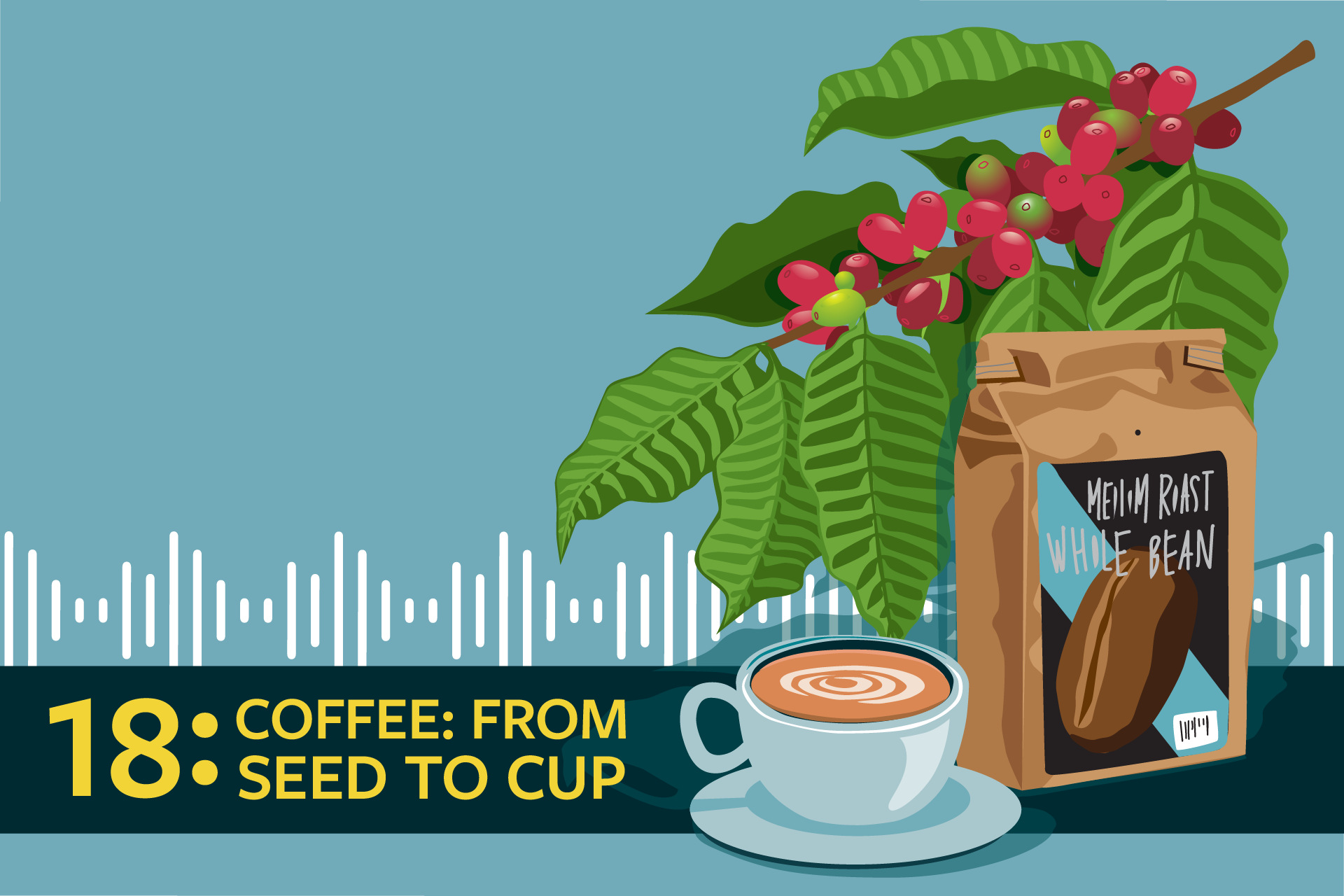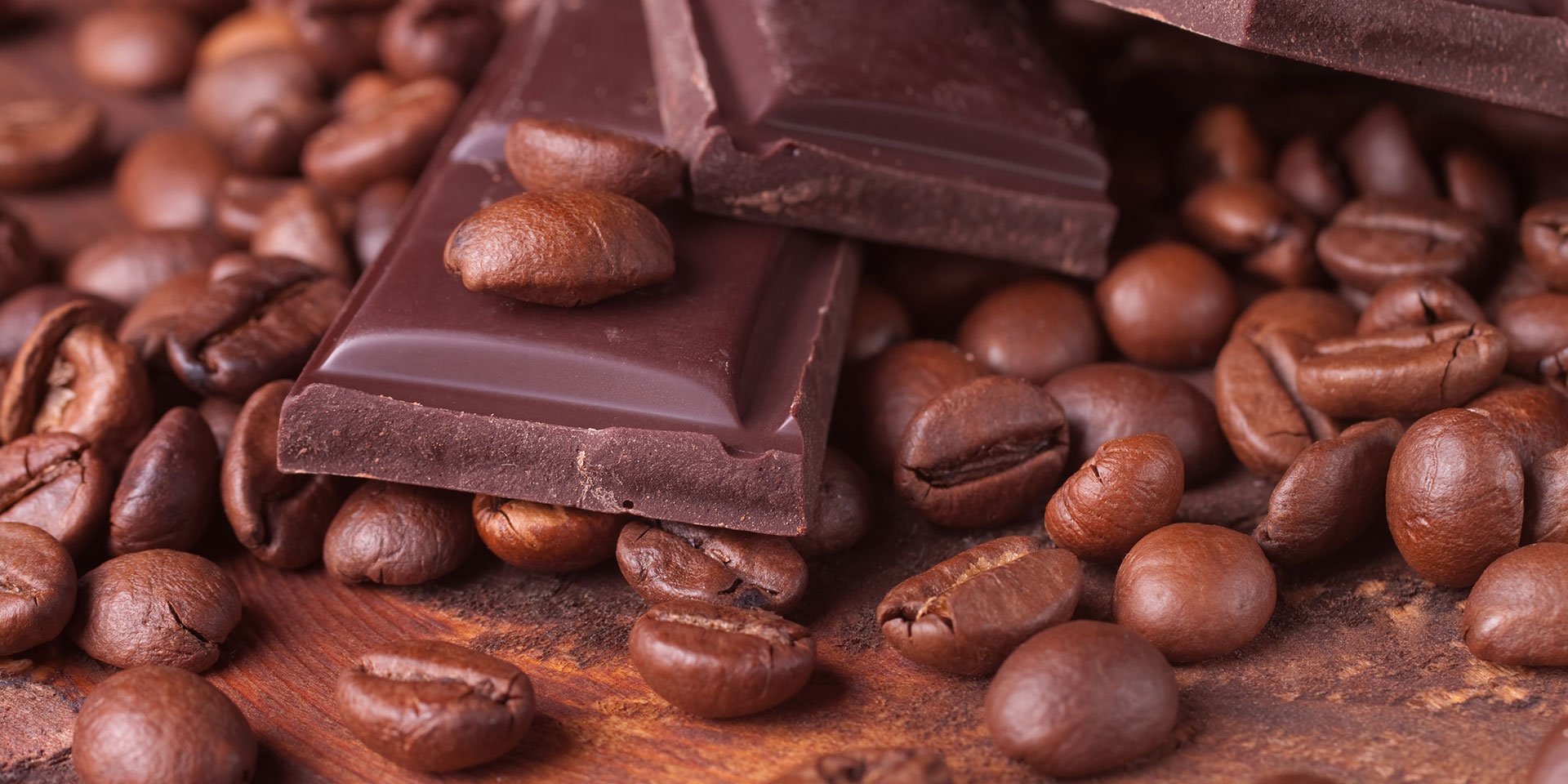Real Food Encyclopedia | Coffee
How did the fruit of a desert shrub become one of the most popular beverages on the planet?
Coffee originated in the mountains of Ethiopia, where legend purports that a goatherd discovered the beans after noticing his goats were unusually energetic. “The Oxford Companion to Food” notes that coffee berries were eaten whole at first and later turned into an alcoholic beverage. After becoming popular in Ethiopia, coffee spread throughout the Arabian Peninsula, where coffee roasting and trade took shape. For centuries, Arab traders sold only dried beans, which were infertile, to limit coffee cultivation and maintain control over the industry. But by 1616, the Dutch had established coffee plantations in Sri Lanka and rapidly expanded to Indonesia.
Coffee cultivation became a part of colonial economies around the world, mirroring the production of commodities like sugar and chocolate. The French began growing coffee in the Caribbean, the Portuguese in Brazil and the Spanish in Central America. Multiple European powers also established coffee plantations across West Africa. Today, these areas remain important coffee producers, but also struggle with the ongoing problems of the colonial system: Growers earn very little for their beans, with the profits going mainly to processors and retailers in the West. As the popularity of coffee — mostly arabica and robusta, Coffea arabica and Coffea canephora, respectively — grows worldwide, there are growing efforts to recognize the African roots of coffee and build coffee markets that do more to compensate growers in the Global South.
Did you know?
- The first version of instant coffee was invented as early as 1771, but it wasn’t until after the Civil War that instant coffee really took off.
- More than 2 billion cups of coffee are consumed around the world every day, according to Nature.
- The caffeine in coffee plants isn’t just for your morning buzz — pollinators also become habituated to the drug, making them come back for more. A clear evolutionary advantage!
- Coffee is the world’s second-most traded commodity, after crude oil.
What to look for when buying coffee
About one-third of the world’s coffee production is Robusta, much of it grown for the instant coffee market. Arabica beans have less caffeine, but are often described as superior in flavor, being lower in acidity and bitterness. Coffee beans vary widely in flavor depending upon where they were grown, the quality of the bean, the way they were harvested and the method (and duration) of roasting. Coffee connoisseurs describe the aromas and flavors of coffee in as much detail as those of wine, with different roasts and varieties evoking flavors of chocolate, caramel, citrus, dried fruit and flowers. In general, lighter roasts of coffee tend to preserve more delicate and fruity flavors, while darker roasts bring out chocolatey and caramel notes.
Because roasting styles have such an impact on coffee beans, many factors — like roast level and bean variety — depend on personal preference. Overall, however, buying whole beans and grinding them at home will provide fresher, more vibrant-tasting coffee than using pre-ground beans. Beans should have a strong smell, without any musty odors. Coffees with a roasting date on the package are an easy way to avoid stale beans. Try to use the coffee within a couple months of the roasting date.
Sustainability of coffee
Environmental impact
As coffee’s popularity has grown across the globe, so has its ecological impact. Coffee shrubs prefer shade, but are commercially grown in a variety of ways — from shade-grown polyculture (with multiple plants or crops grown alongside the coffee shrubs, which helps shade them) to sun-grown monoculture. Traditionally, coffee was shade-grown on small, biodiverse farms, which preserved animal and bird habitats, but the demand for coffee has fueled the creation of “sun grown” monocultured plantations, where growers clear-cut native forests and intensively use synthetic fertilizers and pesticides in an attempt to maximize productivity.
In addition to fueling deforestation, these monocultured plantations require intensive use of chemical fertilizers and pesticides, with Brazil’s use of pesticides on coffee plantations increasing 190 percent in the last decade. More than a third of the pesticides used in Brazil are banned in Europe and other countries, a problem that’s echoed in other coffee-producing regions worldwide. This has far-reaching impacts on both people who live in these areas and the environment around them, increasing risk of poisoning and other pesticide exposure problems, harming non-target species and contributing to biodiversity loss.
Climate change
Coffee plants can be sensitive to changes in temperature and moisture. As climate change shifts rainfall patterns around the tropics and brings heatwaves and temperature swings to the usually stable alpine climates where coffee plants usually thrive, coffee growers are struggling to adapt. This is especially true for arabica coffees, which are more delicate plants than robusta varieties.
Climate change also fosters an environment where pests and diseases thrive. Mounting pressure from insects has pushed insecticide use on coffee farms higher in recent years, and the threat of bacterial and fungal infections is also higher with rising temperatures.
These pressures, combined with ever-increasing demand for coffee worldwide, means that coffee production could become impossible in some areas where it’s currently produced, with one analysis suggesting coffee production could fall 50 percent by 2050. However, scientists and growers are working to repopularize traditional cultivation methods (like shade-based polycultures) that make plants more resilient while decreasing their dependency on chemical use. Meanwhile, breeders are attempting to make coffee plants more productive and resilient in the face of climate volatility by interbreeding arabica and robusta coffees.
Labor
Because most coffee growers are selling on the global commodity market — where beans are treated as interchangeable — growers have little control over prices they receive, helping push production standards, wages and earnings lower. Smallholder growers often receive prices that are less than 10 percent of the retail price for their beans, which traps many farmers in poverty. On larger plantations, labor exploitation is common, with the U.S. Department of Labor reporting child labor problems in Brazil, Costa Rica, Vietnam and a number of West African countries.
Some companies and organizations try to provide an alternative by sourcing beans more carefully, compensating growers and setting standards for workers. The fair trade movement is the largest of these, with two major labels, Fair Trade Certified and Fairtrade, available. While these labels can’t make the coffee market completely equitable, they do attempt to make the process fairer by setting minimum prices for growers and instituting production standards for workers and the environment. Smaller labels are sometimes available, though standards vary. Many roasters and importers have their own arrangements with growers, so look for that information or reach out to the coffee roaster to get a better sense of how they’re approaching their coffee sourcing.
Cultivation
Coffee plants are low-growing shrubs in the Coffea genus, closely related to Chinchona (the source of quinine) and gardenias. The beverage is made from the roasted seeds (coffee beans) of the plant: either Coffea arabica or C. canephora, known as arabica and robusta, respectively.
Coffee fruit are called “cherries,” pulpy berries that contain the coffee bean (actually a seed). The pulp is separated from the seed by two major methods: dry and wet. In the dry method, the cherries are spread on the ground to dry in the sun. This may take several weeks. In the wet method, the cherries are pulped in a machine, and the pulp is washed away with water, leaving the beans; the beans are then fermented for a few days to naturally remove the last pulpy layer, and finally dried.
Coffee only grows in the “Bean Belt” — an area that spans the globe near the equator. Brazil, Vietnam, Indonesia, Columbia and India are the top coffee-producing countries in the world. Hawaiʻi is the only U.S. state that grows coffee.
Eating and drinking coffee
Storing
Contrary to popular belief, it is not a great idea to freeze or refrigerate coffee beans, ground or whole — contact with moisture of any kind is no good. Instead, store whole beans in an air-tight container out of reach of sunlight.
Cooking
Coffee is still an important beverage in Ethiopia, where it’s part of a daily coffee ceremony in many households. Outside of its center of origin, coffee has taken many forms around the globe, from strong, thick Turkish coffee to the pale French café au lait.
Coffee isn’t just for drinking — it’s also used as a flavoring for everything from ice cream to candies to beer and liqueur. Chocolate and coffee are natural partners — in fact, adding black coffee to chocolate desserts is a tried-and-true way to up the chocolate flavor. Coffee pairs nicely with citrus; espresso shots are frequently served with lemon peel. Ground coffee also makes a nice rub for rich meats — especially beef like steak and brisket. And of course, there is the famous Southern red-eye gravy, made with black coffee and country ham (and usually served over said ham).
Nutrition
Brewed coffee offers relatively few nutrients — a standard cup has small amounts of riboflavin, magnesium and polyphenols (plant compounds that may improve circulation and cardiovascular health) in addition to about 95 milligrams of caffeine.
The overall health benefits of coffee have been debated ad nauseam, but the scales have tipped lately in its favor (at least, when consumed in moderation). Moderate coffee drinking (usually defined as five cups or less per day) has been linked to decreased risk of several chronic diseases, including Alzheimer’s, Parkinson’s, diabetes and heart disease. However, caffeine consumption can also temporarily aggravate conditions like anxiety and high blood pressure.
Top photo by pixy_nook/Adobe Stock.



